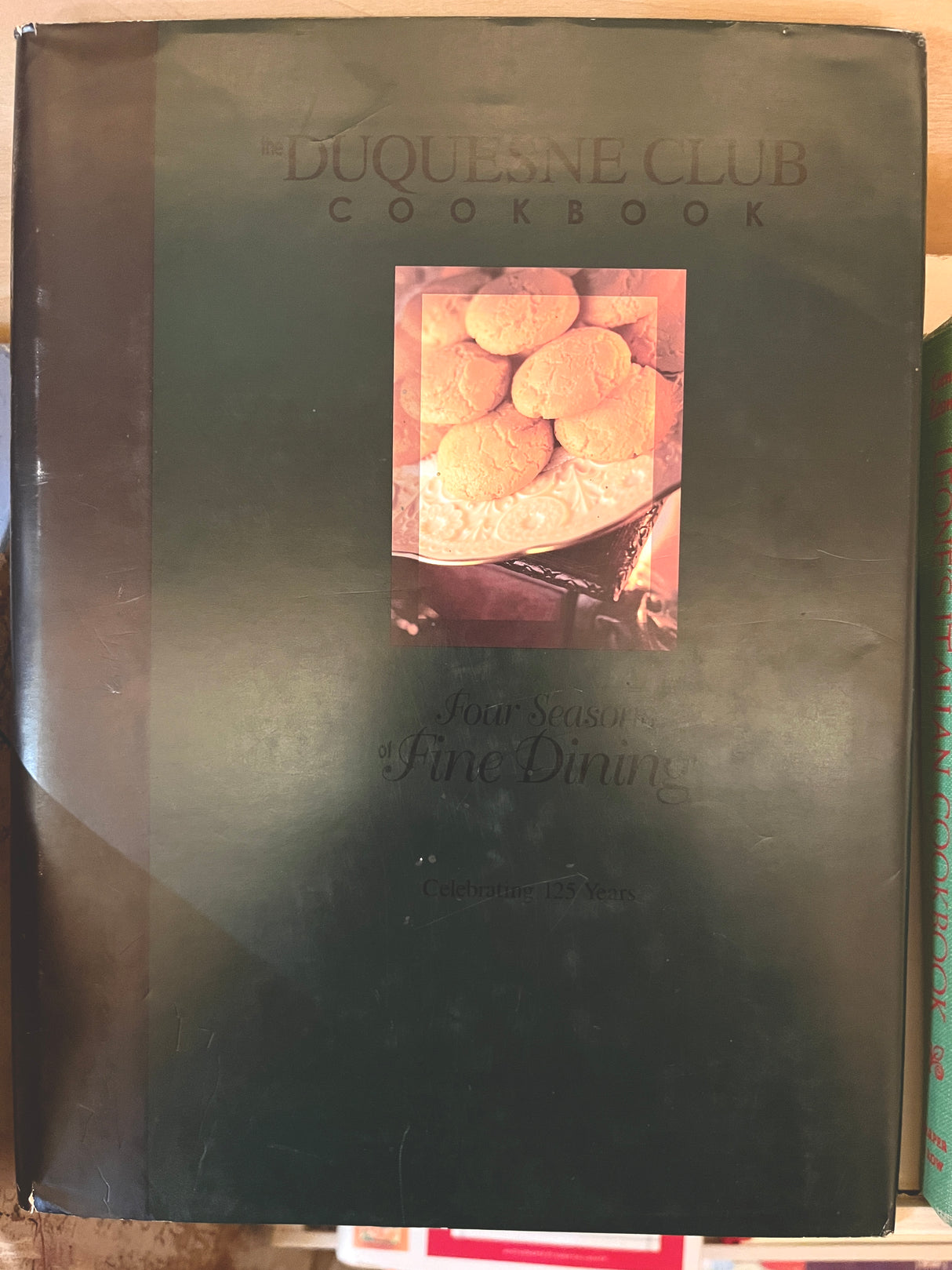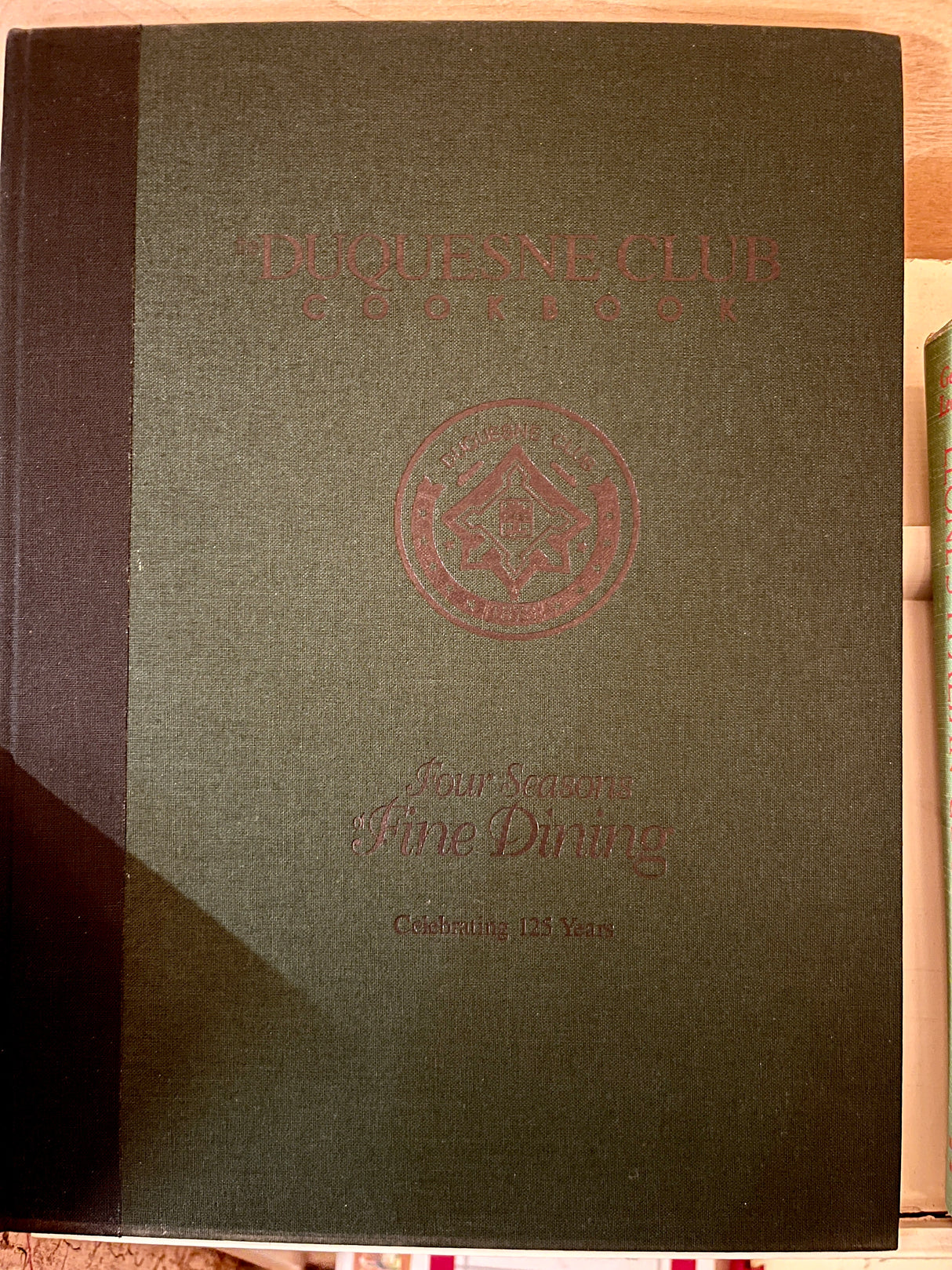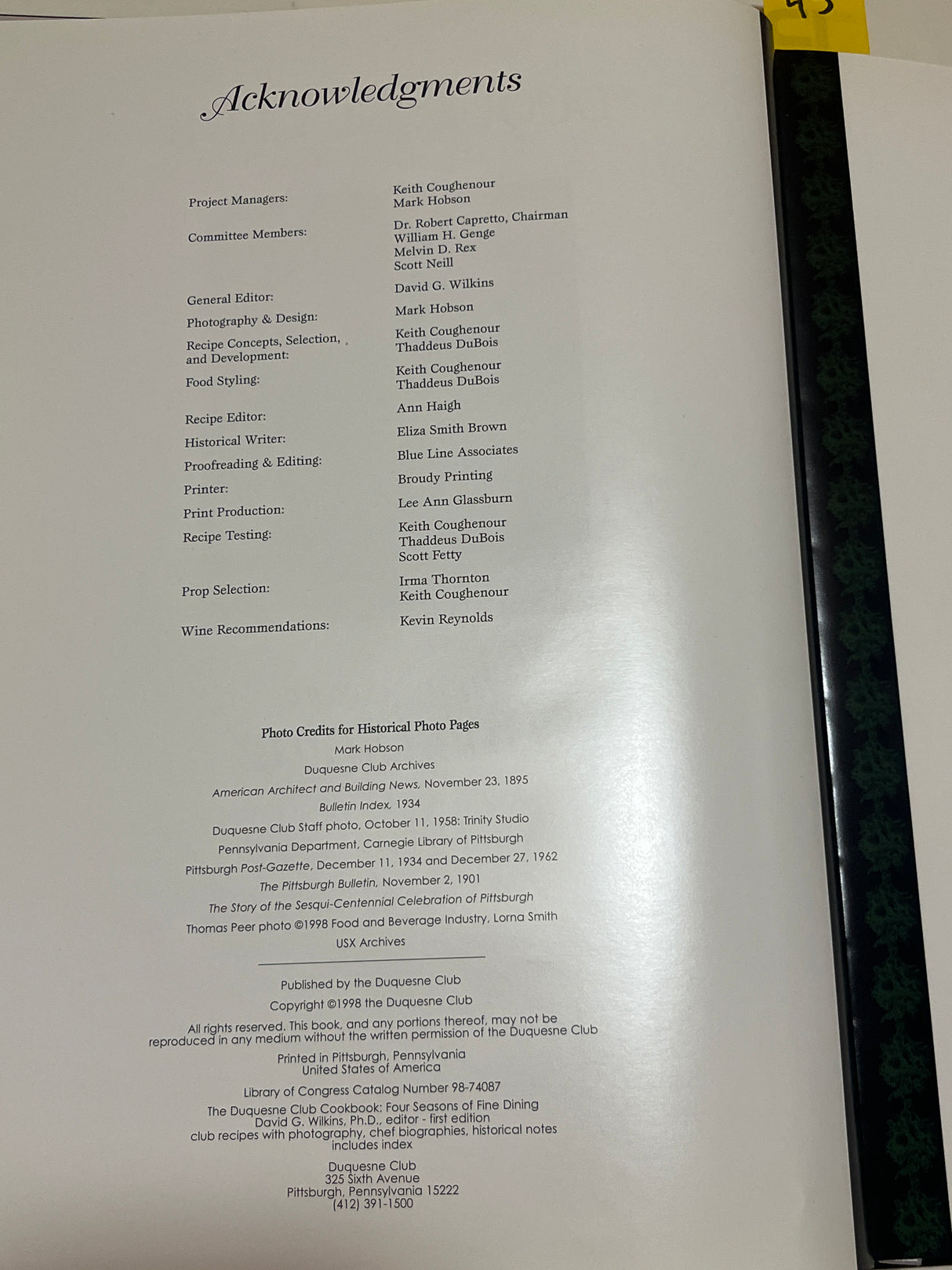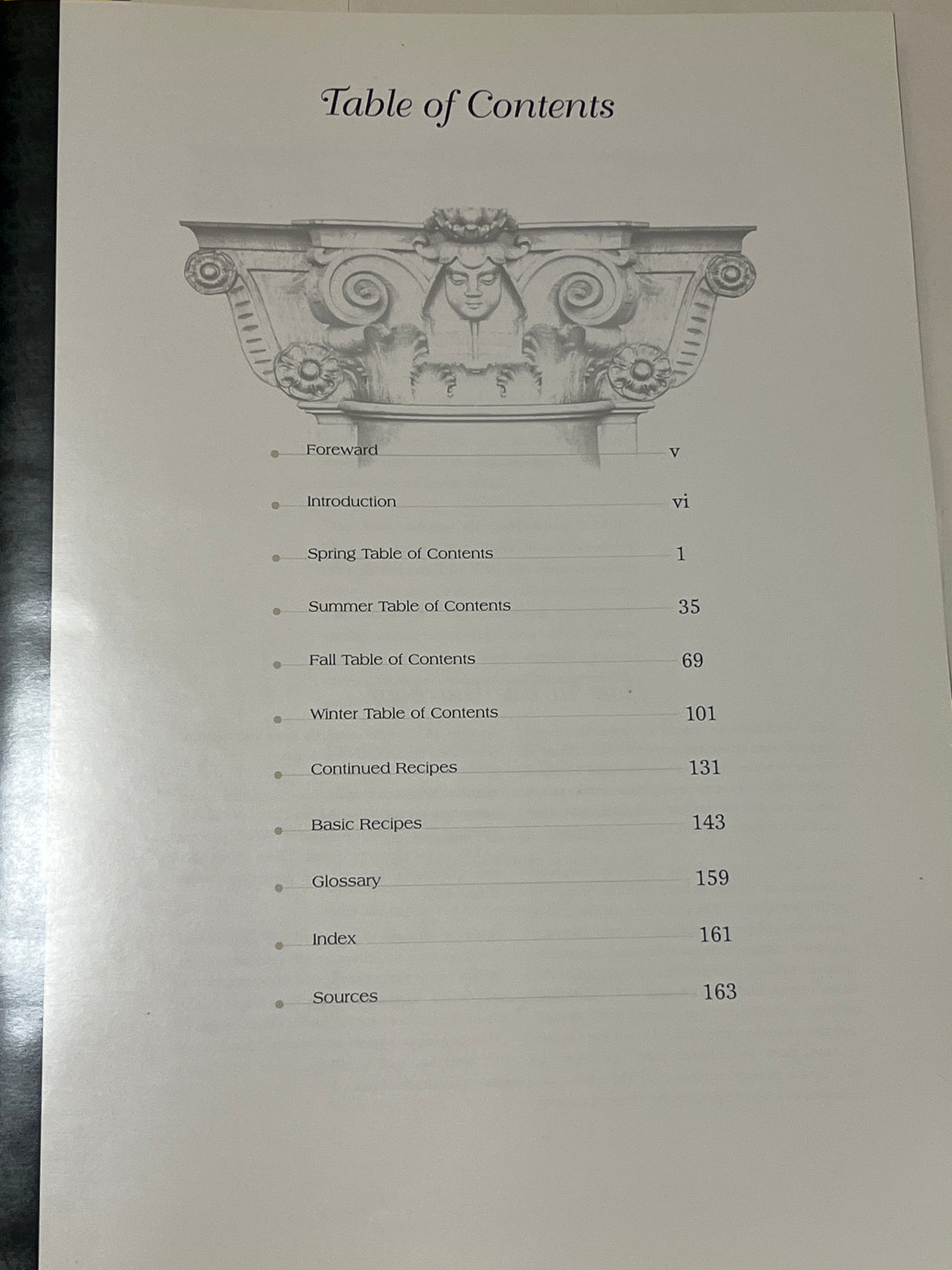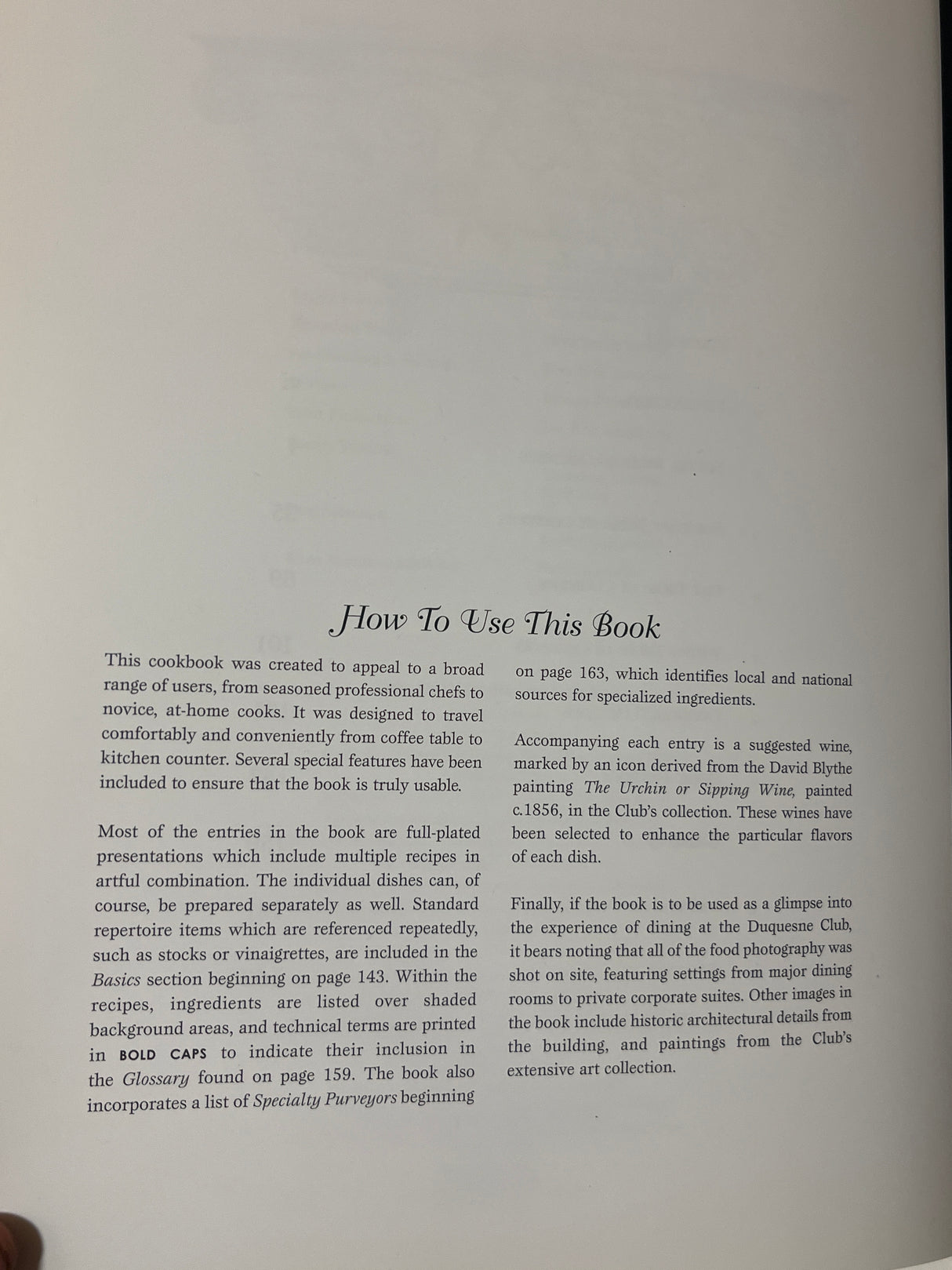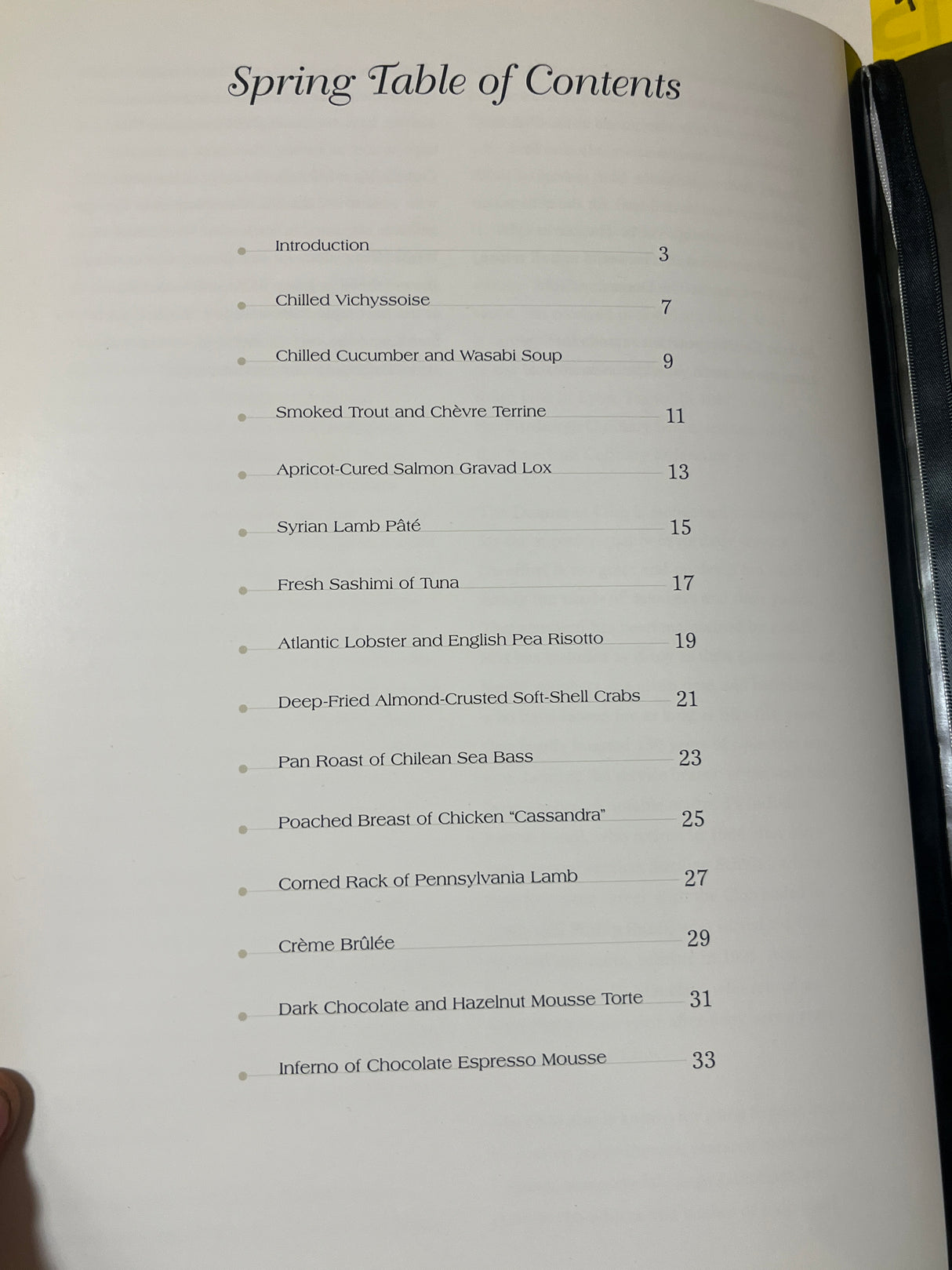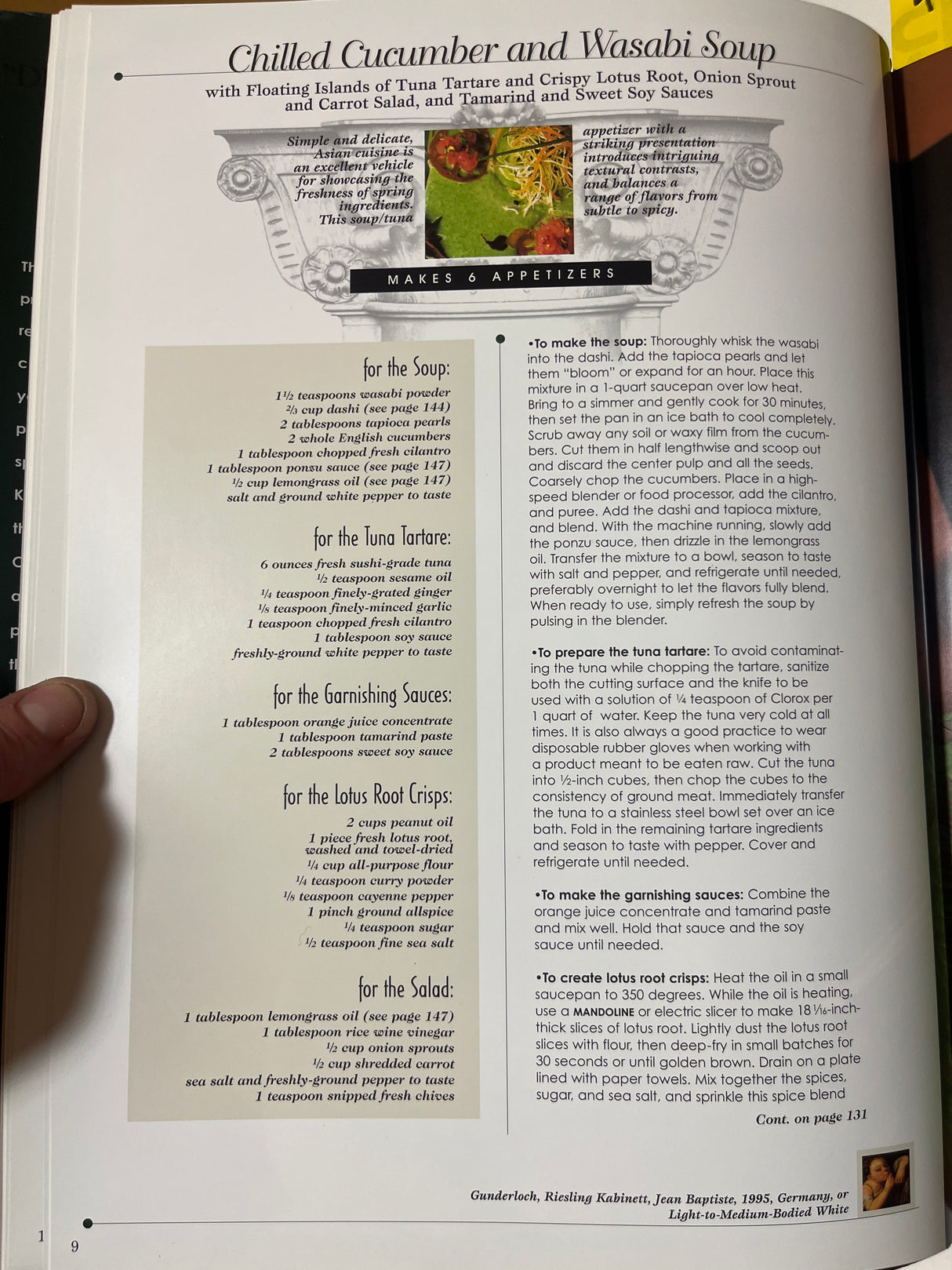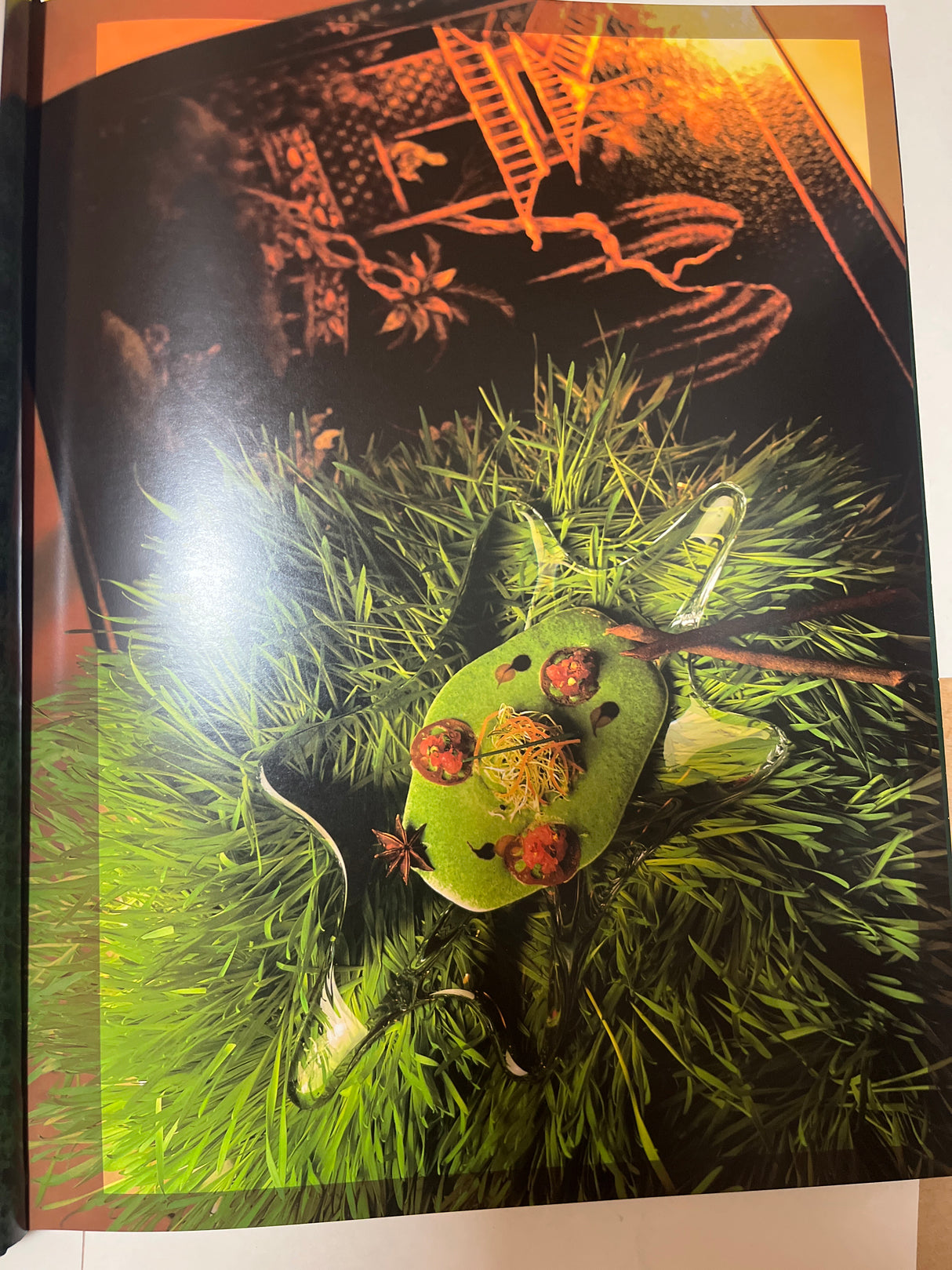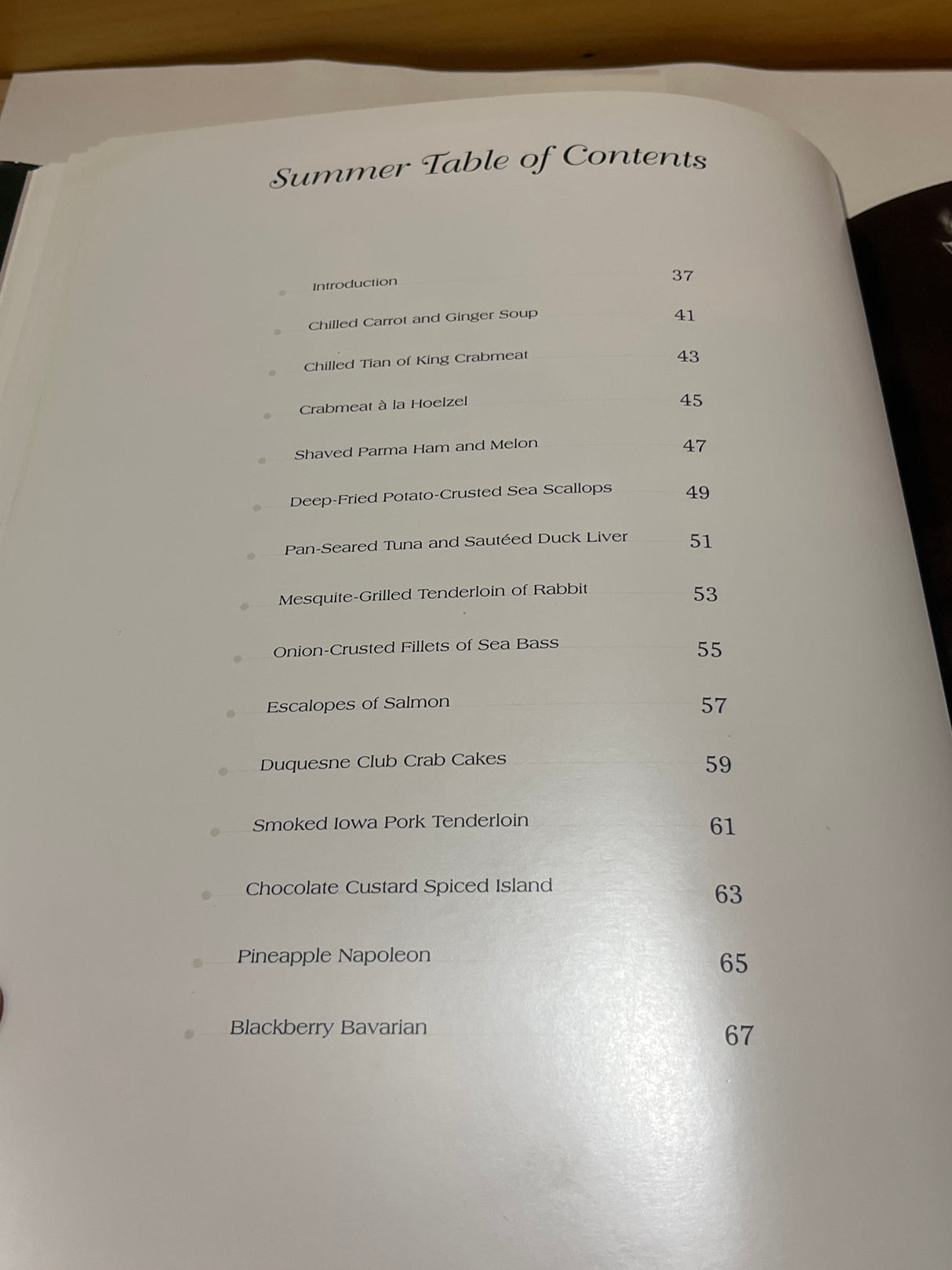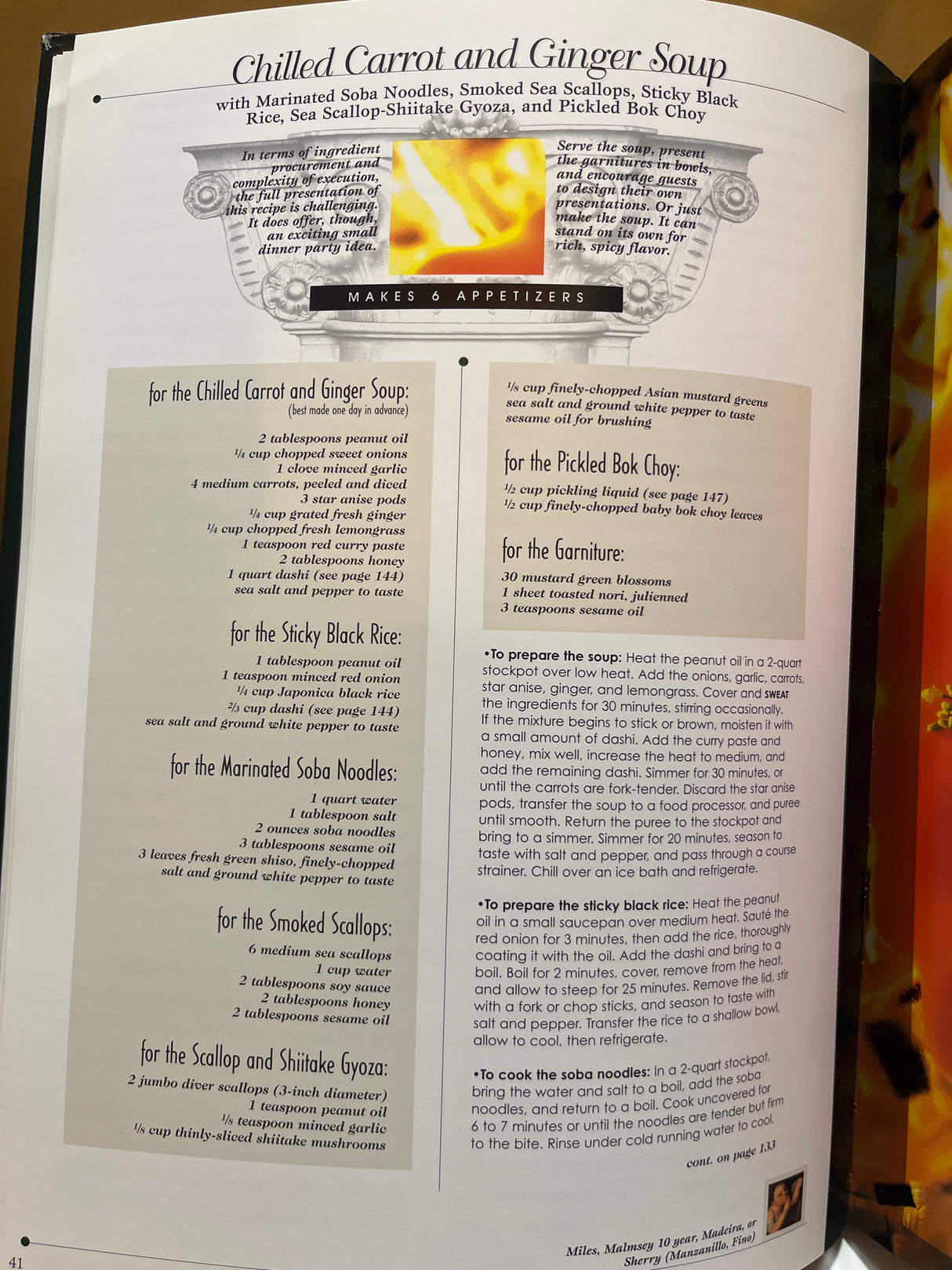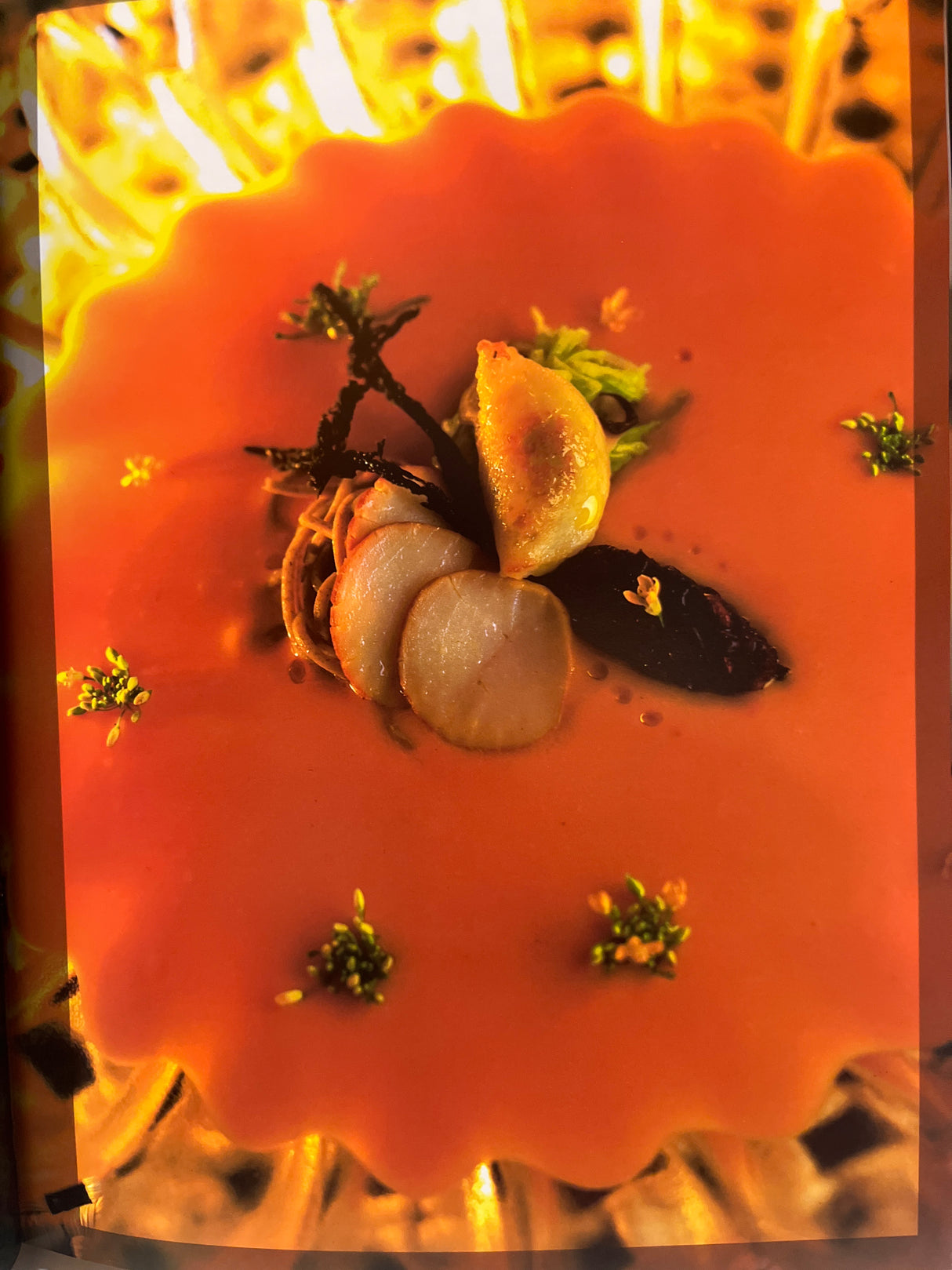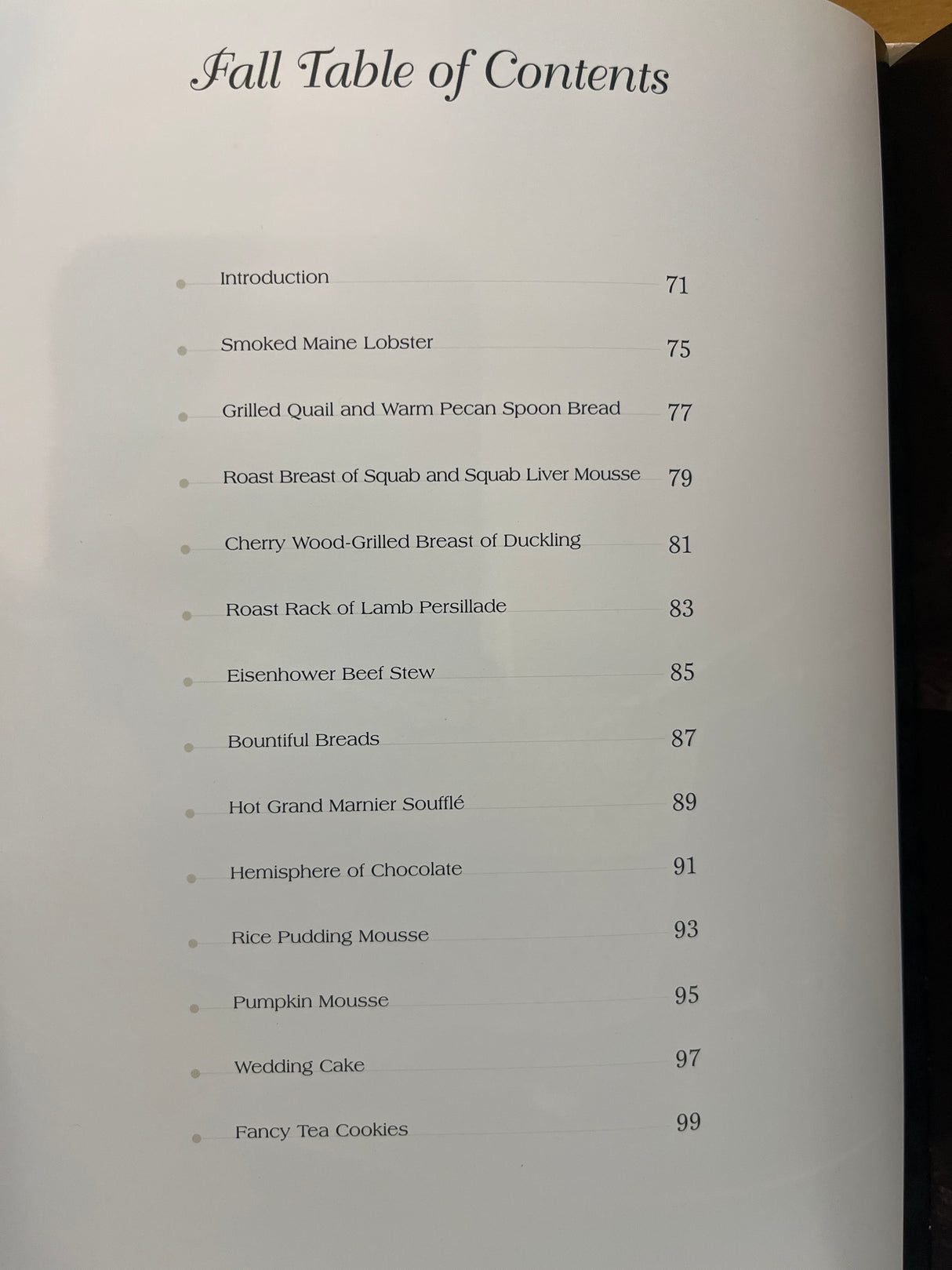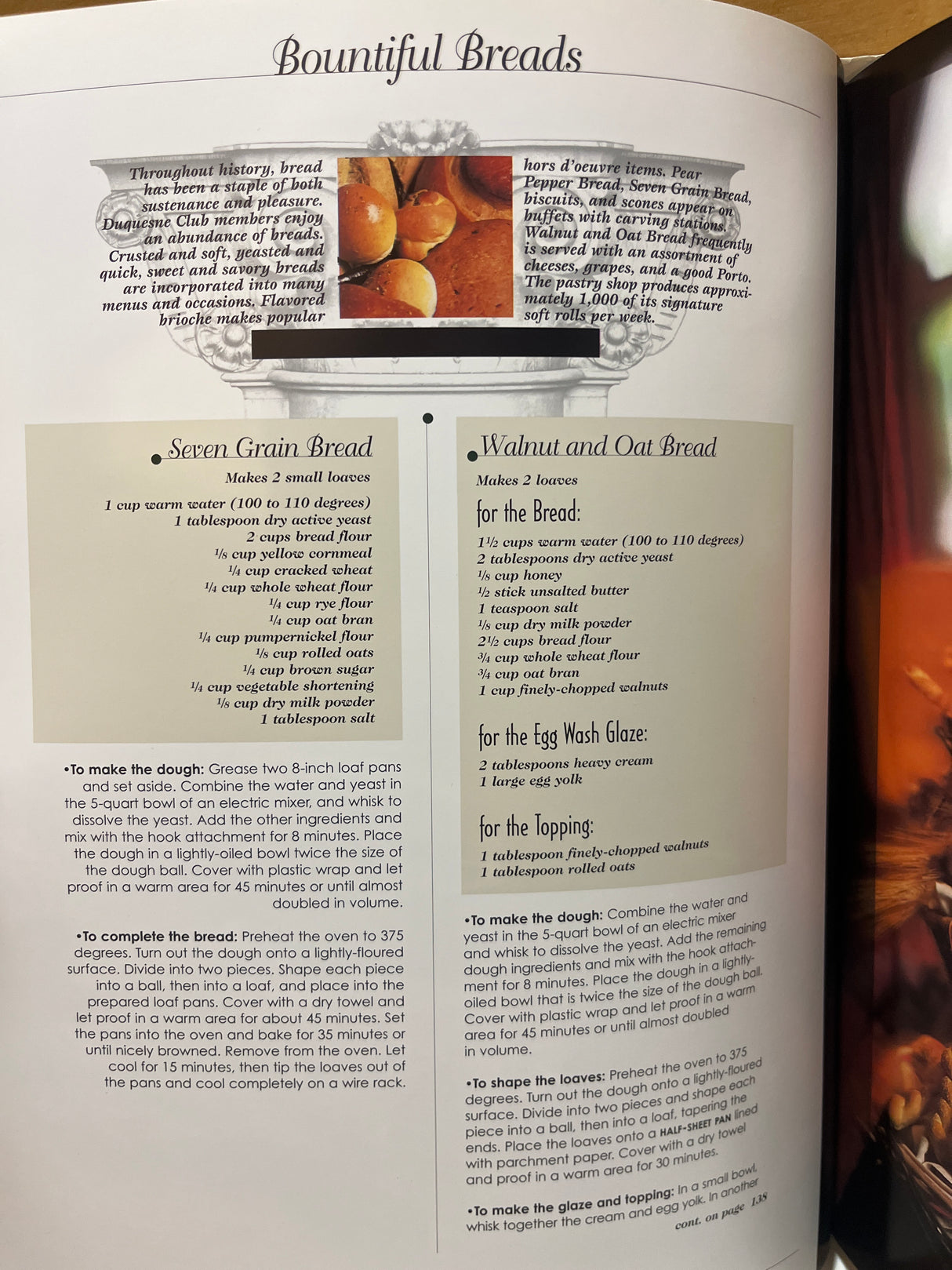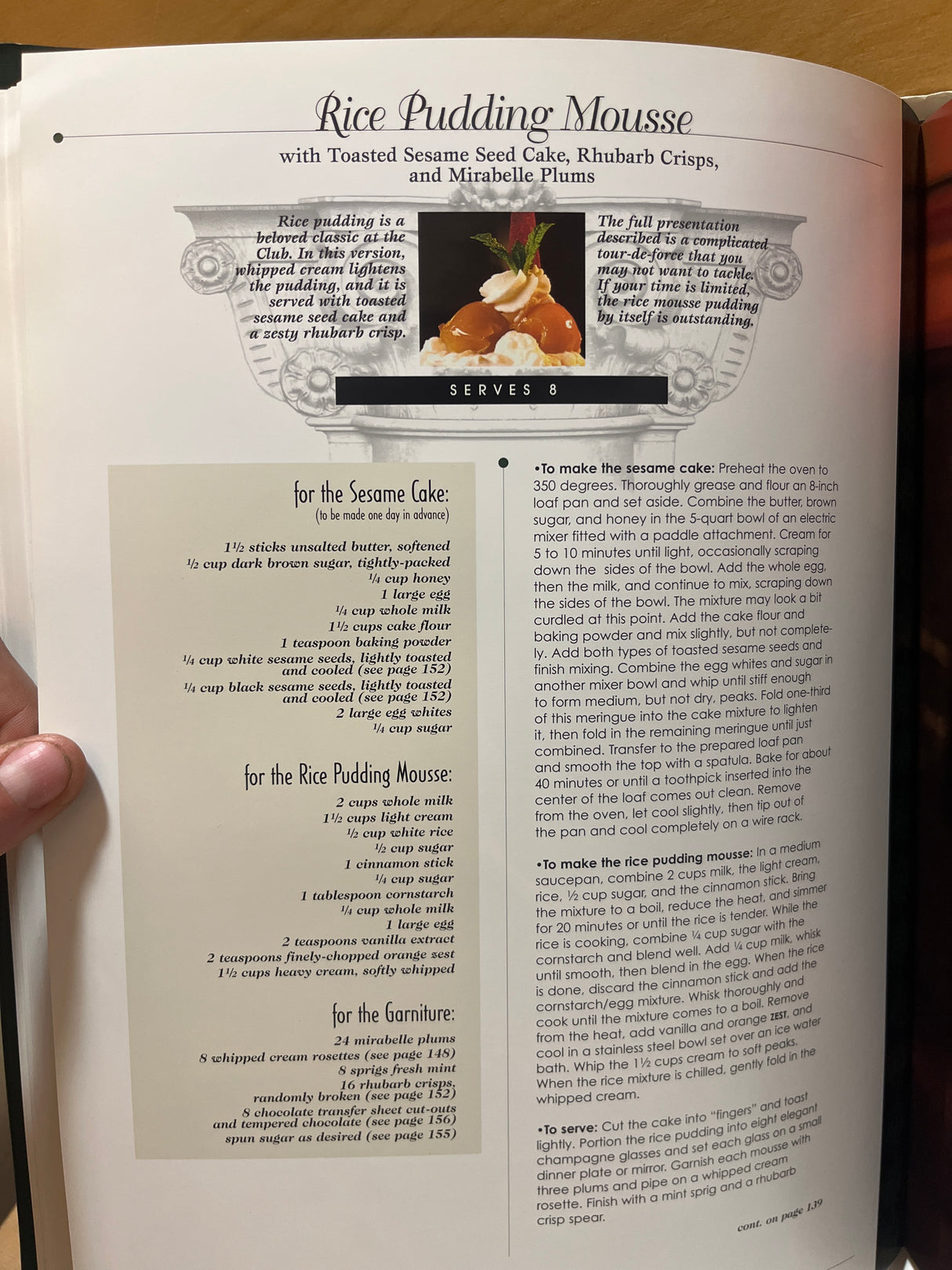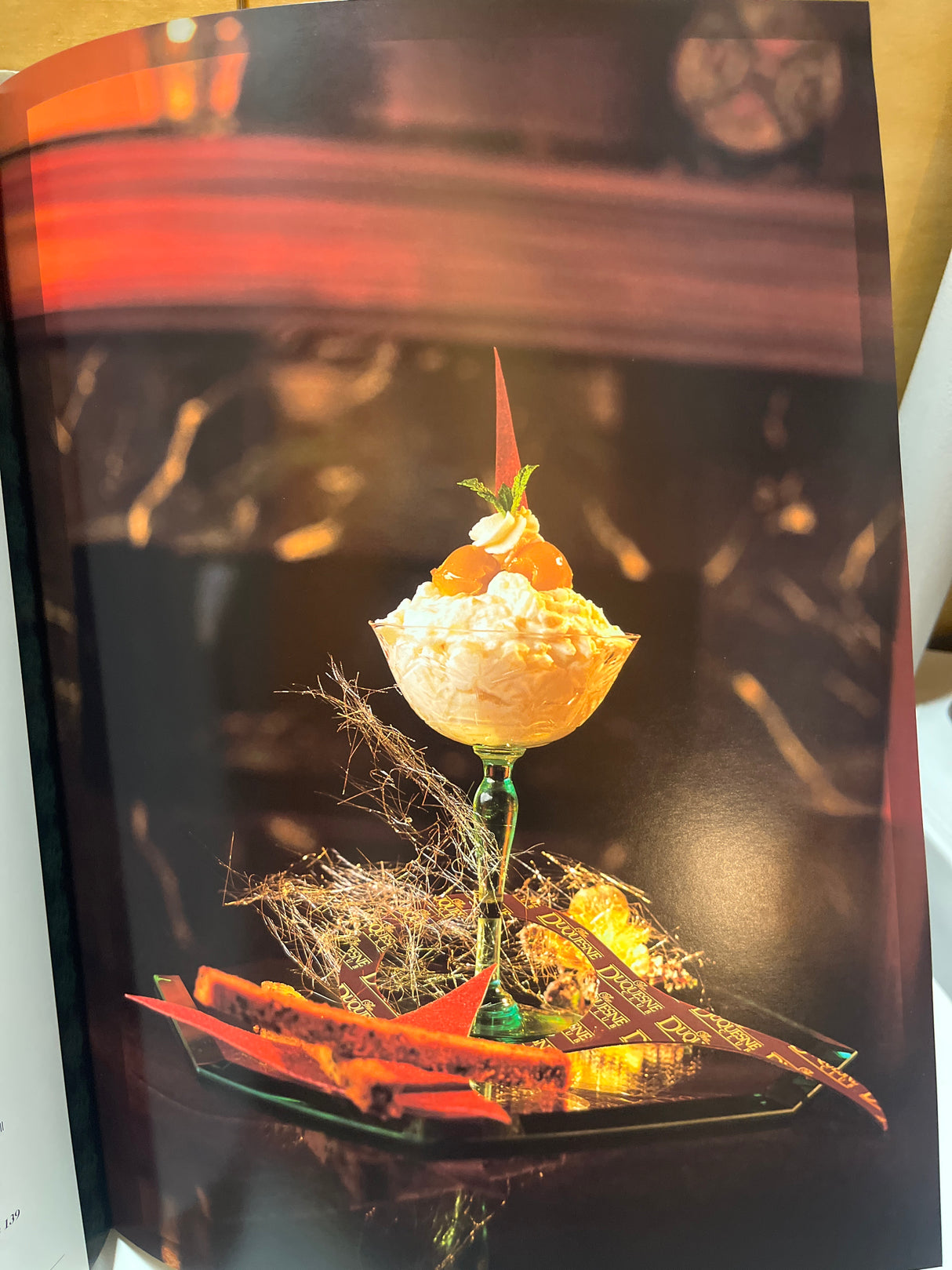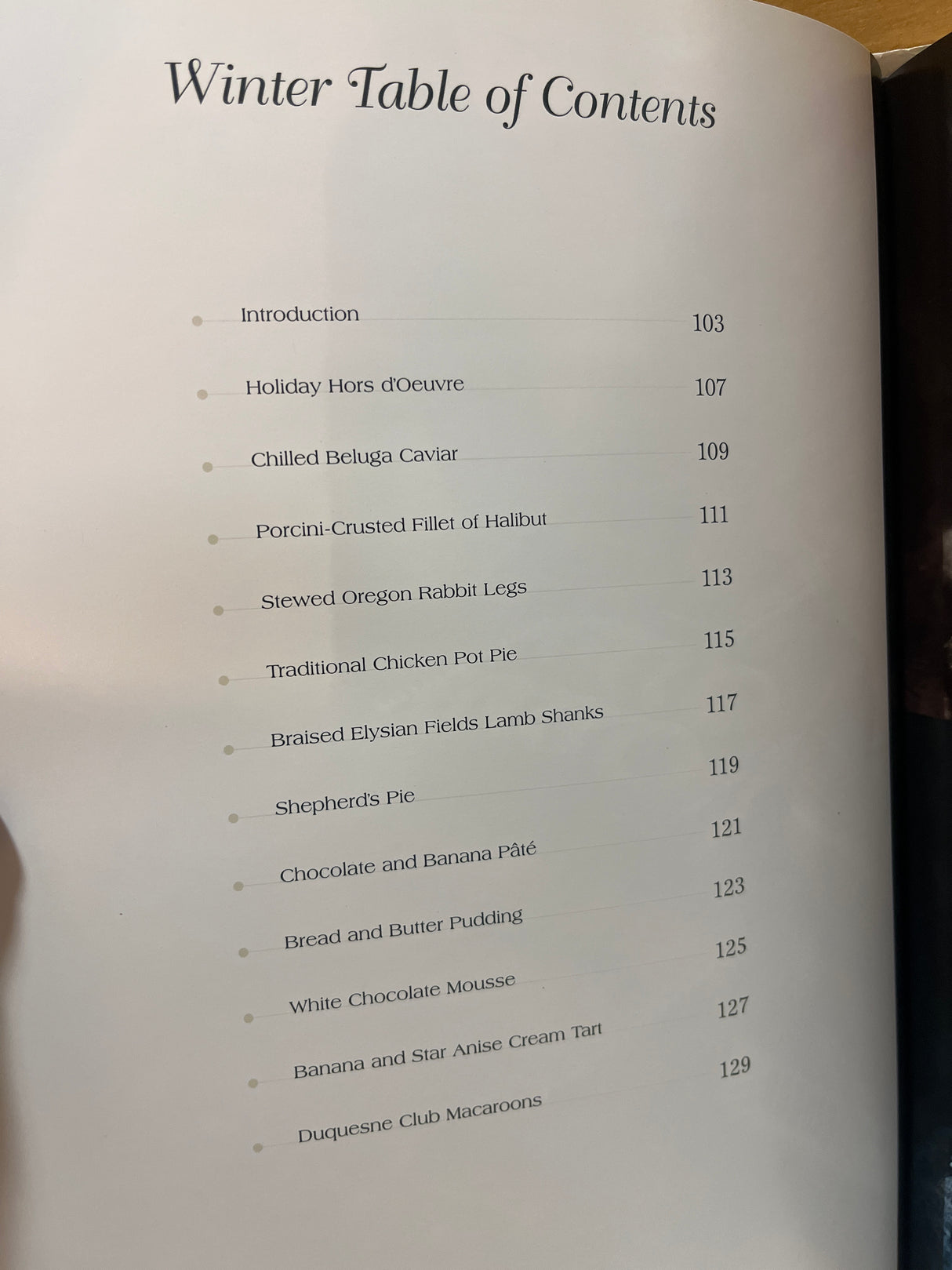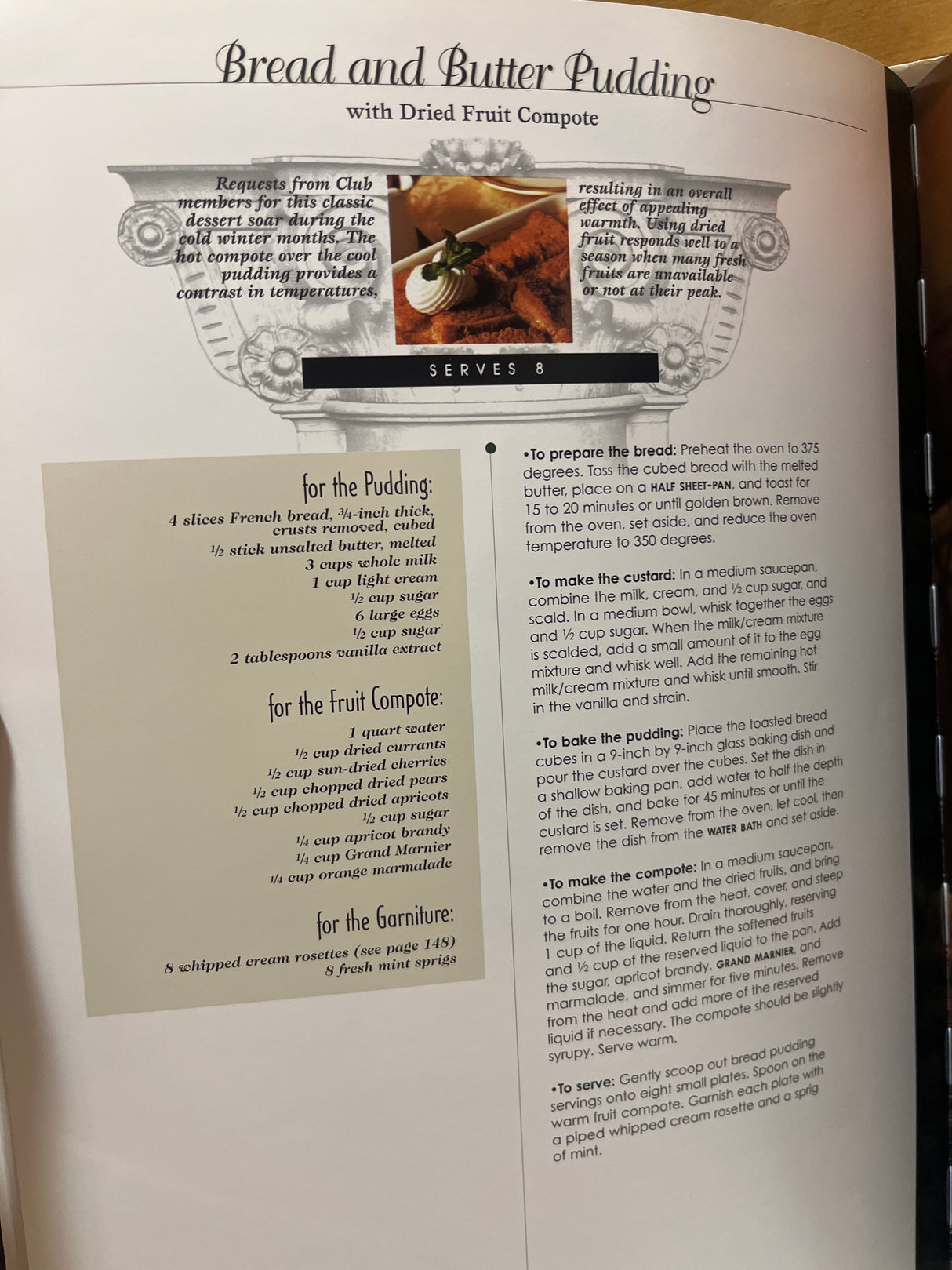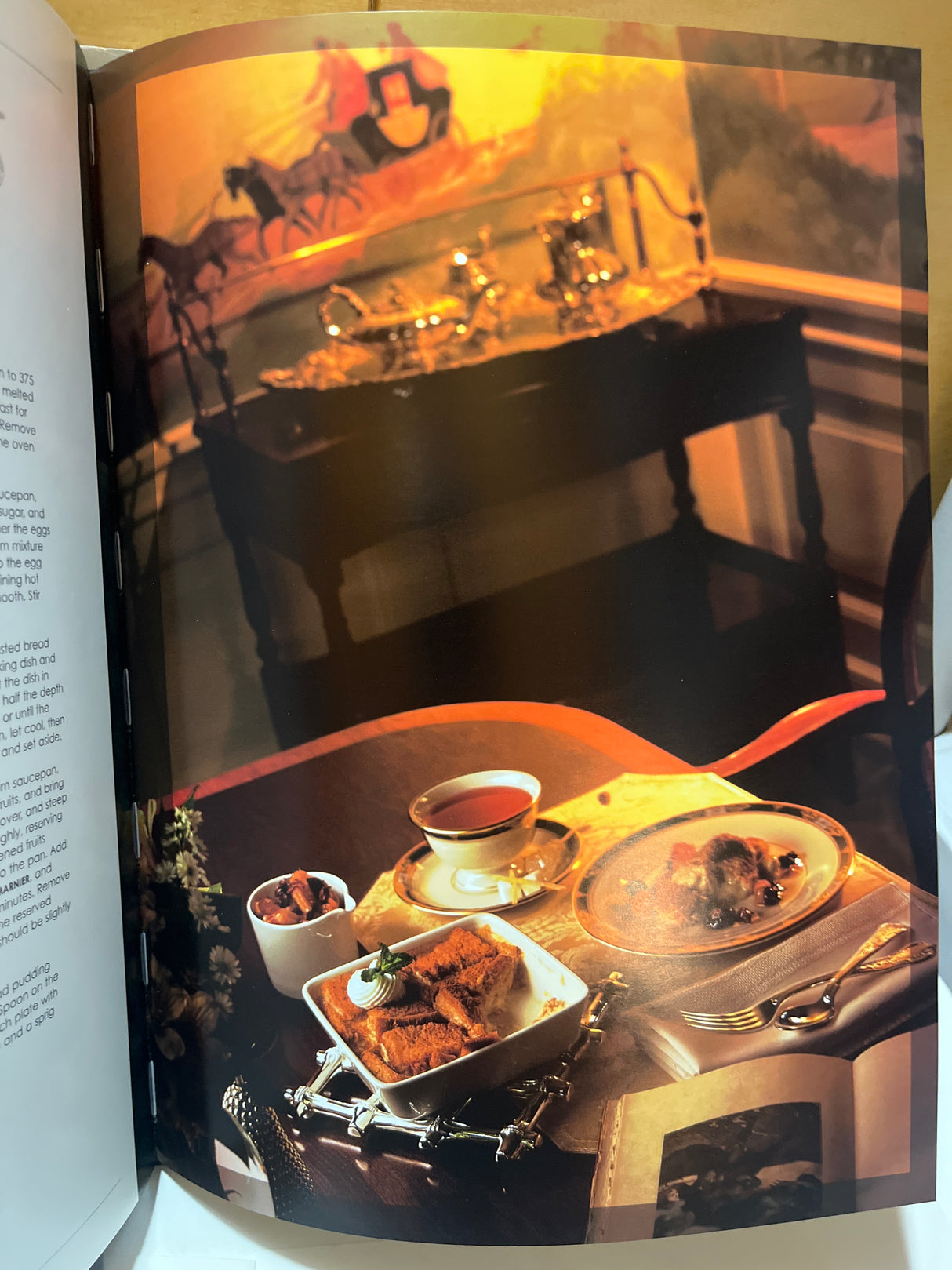RARE Duquesne Club Cookbook:
RARE Duquesne Club Cookbook: is backordered and will ship as soon as it is back in stock.
Couldn't load pickup availability
David G. Wilkins | Duquesne Club
Vintage | Made in the USA | Excellent Condition
From the book description:
“This hardbound, richly illustrated presentation of over 100 traditional recipes and unique contemporary cuisine is the culmination of several years of research, recipe testing, photography, design and writing spearheaded by Executive Chef Keith Coughenour. The journey through the four seasons of the Club's culinary year is a satisfying and informative trip guaranteed to pique the interest of everyone from the experienced chef to the cookbook collector.”
Introduction:
”The Duquesne Club's recent selection as the nation's top-ranked city club has been more
than 125 years in the making. From its founding in 1873 up to the present, award-winning kitchen, the Club has maintained a steady commitment
to exceptional food and service. Thousands of members and guests have savored the Club's standard of fine dining on a daily basis, as well as on special occasions.
Steeped in tradition, the Club now stands on the cutting edge of culinary art, responding to members' tastes while still setting new standards of excellence and innovation for the entire industry. This cookbook, the first in the Club's
125-year history, showcases both traditional recipes and contemporary innovations.
The story of food at the Duquesne Club is largely the story of the Executive Chefs who have commanded the kitchen - most notably Abel Bomberault, André Plechot, Nicholas Colletti, Thomas Peer, and Keith Coughenour. Each chef's characteristic style propelled the Club toward the highest culinary standards of his time. Their collective vision - of training, research, creative experimentation, and refinement — continues to imprint the menus of today. Many traditional dishes remain proudly in the Club's repertoire. Continuing the creative spirit of his predecessors, Chef Coughenour explores global possibilities, bringing the fresh excitement of contemporary cuisine to the Duquesne Club table.
Abel Bomberault served the Club from 1932 to 1962 with a classic French orientation. His career began with his apprenticeship at age fourteen to a pastry chef in his home village of Argent, and matured in the finest hotels of Paris and London. He came to the Duquesne Club via the Ritz-Carlton in New York and the Atlantic City Ritz. Chef Bomberault endowed the Duquesne Club with a legacy of emphasis on the freshest of ingredients and plenty of seafood: forty percent of the menu during his regime was fresh seafood.
Bomberault initiated relationships with the finest purveyors. Early on, Treesdale Farms raised chickens and produced eggs under the most sanitary conditions. Chickens were fattened, killed, dressed, and delivered to the Club weekly.
Perfect, infertile eggs arrived daily. Beechwood Farms kept seventy-five purebred Guernsey cows, purchased by the Club, to produce government-inspected, unpasteurized milk with a rich 5% butterfat content. The Club could offer cheddar cheese that was made with 35.6% butterfat, specially aged, and wrapped for its exclusive use. Cherrystone clams, lobsters, oysters, crabs, and shrimp were shipped on ice from Cape Cod.
Bomberault also introduced dishes to Pittsburgh that would become Club staples such as vichyssoise (first created by Louis Diat at the Ritz-Carlton in New York), Virginia spot, and shepherd's pie (a product of his three years as a chef in London); as well as ethnic offerings such as moussaka and dishes with Cajun flavors. And it was Bomberault who began the accepted practice of serving sea bass in lieu of Virginia spot. When spot became difficult to acquire, Bomberault substituted the bass and discovered that not only did the larger size work well, but also that the members actually preferred it to the oilier spot. What one member dubbed the "alleged spot" has remained a Club favorite ever since.
Having worked under Auguste Escoffier, the father of modern French cuisine, Bomberault instituted Escoffier's brigade system in the Club's kitchen, dividing it into specialized areas of expertise. Bomberault was coaxed out of retirement in 1964, when he was selected by the French Consul-General in New York to represent France at Le Grand Tour, an international food exhibition sponsored by the Chefs' Association of Pittsburgh.
André Plechot succeeded Bomberault from 1962 to 1963. Born in the Bordeaux region of France, Plechot had apprenticed at the Hotel Thermines and the Hotel Biarritz, where he cooked for King Alphonse of Spain and the Duke of Windsor. Like Bomerault, Plechot was Escoffier-trained: he became best known for his preparation of traditional sauces such as béarnaise and hollandaise. Plechot also is remembered for his display on behalf of the Club at the 18th Annual Chefs' Association of Pittsburgh Show. Plechot's offering, the largest in the exhibition, showcased thirty-six items including turkey "en volière," with the feathers reassembled around the cooked bird.
Nicholas Colletti advanced to Executive Chef in 1963, after serving as Plechot's Sous Chef. Self-taught and apprenticed at an early age, Colletti augmented his training with extensive travel and years of Berlitz language studies in French and Italian. According to Colletti himself, he tended to stick with traditional items, and "changed gradually and very little according to the members' likes and dislikes." Among his favorite menu offerings were turtle soup, chicken pot pie, calves head vinaigrette, and Eisenhower Beef Stew. Named by his professional peers to the Honorable Order of the Golden Toque in 1976; an honor held, at the time, by fewer than eighty chefs in the world; Colletti also was the first Chefs' Association of Pittsburgh Chef of the Year, and an active leader in the American Academy of Chefs. At the testimonial dinner in honor of his Golden Toque award, Colletti was treated to an elaborate French menu prepared by his son, St. Clair Country Club
Chef Nicholas Colletti, Jr.
Chef Colletti retired in 1984, and was succeeded by John Lubinski, who had come to the Club under Chef Bomberault in 1957 and was
appointed Colletti's Assistant Executive Chef in 1962. When Lubinski left the Club in 1987, Chef Colletti came out of retirement to ease the transition.
Thomas Peer, the first chef in one-hundred years to come into the Executive Chef position from outside the Club, served in that capacity from 1987 to 1992, and as Food and Beverage Director from 1992 to 1994. His stated goal was to establish the Club as a culinary leader, and make its kitchen "the best in the country" because "its members deserve only the best." Peer championed a shift toward contemporary American cuisine, with its larger plates and a focus on characteristically American ingredients, preferences, and historical precedents. He introduced such items as veal with Shaker herb sauce and U.S. Senate bean soup. He also insisted upon the freshest products, such as homemade pie fillings, garden-fresh herbs, homemade breads, vegetables, fresh pasta, mesclun salad, edible flowers, fiddlehead ferns, and homemade ice cream. Modernizing the kitchen operations for greater efficiency, Peer trained his staff as tournants or roundsmen, enabling them to work in a variety of areas in the kitchen. Outside the kitchen, Peer introduced cooking classes and winetasting events for Club members. He cherished his interaction with members, characterizing them as "ladies and gentlemen of a caliber you will not see anywhere else in the world." Self-taught, Chef Peer advanced "from dishwasher to potwasher to Master Chef" and, in 1990, became one of only fifty Certified Master Chefs in the country. He ultimately was recruited as Director of Food and Beverage Operations at the Culinary Institute of America, Hyde Park, New York in 1997.
Keith Coughenour, at the helm since 1992, has infused the menu with contemporary tastes rooted in classic French techniques, but enlivened by flavors and ideas from cultures around the world. Originally from Elizabeth, Pennsylvania, Chef Coughenour's early career was spent at the five-star Actuelle Restaurant in Dallas, Texas, where he trained under Certified Master Chef Victor Gielisse. He was recruited by the Club from the Greenbrier Resort Hotel in White Sulphur Springs, West Virginia, where he apprenticed under Certified Master Chef Hartmut Handke and later served as his saucier. Walter Scheib III, who promoted Chef Coughenour to Sous Chef at the Greenbrier, is now Executive Chef at the White House. While at the Greenbrier, Chef Coughenour joined the U.S. Olympic Culinary Team, on which he remained after coming to the Duquesne Club. Captain of the team from 1991 to 1996, he is a strong leader who maintains the quality of traditional items while constantly refining new ideas, creating trends, and keeping the Club's cuisine at the forefront of serious dining.
Chef Coughenour's personal style incorporates creative combinations of unusual seasonal ingredients, textural variety, and unique accom-paniments. He introduced the notion of studied presentation to the Club, designing plates that offer an aesthetic combination of protein, starch, vegetable, garnish, and sauce, as well as adding a third dimension by stacking ingredients to achieve height. Through professional networking and research, Chef Coughenour has promoted the Club's use of small growers, specialty houses, and specialized providers such as a farmer who makes just four varieties of goat cheese, and Elysian Fields Farm, a small purveyor serving a limited clientele with organi-cally-fed lamb. He strives to share his expertise through intensive training of his staff, as well as through themed cooking demonstrations for members that reflect the foods of all four seasons.
These include "Gardening and Cooking with Herbs," "Selection and Preparation of Seafood and Shellfish," a "Harvest Luncheon," and
"Holiday Entertaining with Hors d'oeuvre."
It was under Chef Coughenour that the Duquesne Room was opened in the Crystal Room, formerly the Ladies Dining Room.
Envisioned as a setting for leisurely, sophisticated dining, the Club's signature room offers an upscale contemporary menu. At the same time, reflecting the Club's historic roots, the Pine Room continues to provide a more traditional dining experience.
Working closely with Chef Coughenour is award-winning pastry chef Thaddeus DuBois.
Infusing a blend of creative ideas and exquisite craftsmanship in both new and classic dishes, DuBois has been characterized as a "modernist" who derives his inspiration largely from Swiss, French, German, and American sources. He seeks to "break the rules," creating nontradi-tional presentations of sleek abstraction. His Lemon Tower, a five-inch-high tower of lemon mousse with tart lemon cake and a tart raspberry sauce, has received national attention. Most recently, DuBois captured Silver Medals as part of the U.S. World Cup Pastry Team, in a competition held in Lyon, France in 1997, and at the Pittsburgh Culinary Salon, sponsored by the American Culinary Federation in 1998.
The Duquesne Club is recognized nationwide for the superior quality of its daily service.
No effort is too great and no detail too small to satisfy the needs of members and their guests.
This standard has been maintained by a staff that has included as many as three generations of family members at a given time, and individuals who have served for as long as fifty-five years.
One family boasted 150 years of collective ser-vice. Leading the service branch of the staff have been a series of notable maître d's including Joseph Pandl, who retired in 1964 after forty-two years of service; Stephen Schultz, whose fifty-four-year career with the Club ended in 1983; and Phillip Bucci, who served the Club for forty-six years, retiring in 1991. Also notable is Camille Mauclair, who retired as First Floor Supervisor after forty-seven years of service to the Club.
The Club also is known for going to great lengths to develop party themes, research international cuisines, accommodate large gatherings, and cater to the whims and wishes of individual members. As Chef Bomberault once said, "If a member wants ice cream on his sirloin steak, I will serve it." Likewise, guests at the Club are treated with tremendous care. Mr. and Mrs.
Gregory Peck stayed at the Club in May of 1997. When they were invited back for the dedication of the new Pittsburgh Public Theater in 1999, Mr. Peck responded that he would indeed return, ".. if I can stay at The Duquesne Club!"
And the Club's reputation extends into the international arena. In addition to notable dignitaries who have been fêted at major special events, countless other international visitors have treasured their Duquesne Club experiences as among their most memorable.
Camille Mauclair tells the story of his sister, who worked for the U.S. Government in Europe and was stationed in Paris after World War II.
While sitting alone in a restaurant one evening, she overheard a group of French businessmen at the next table: "We were just in the United States, and the only decent food we had was at the Duquesne Club in Pittsburgh."“

